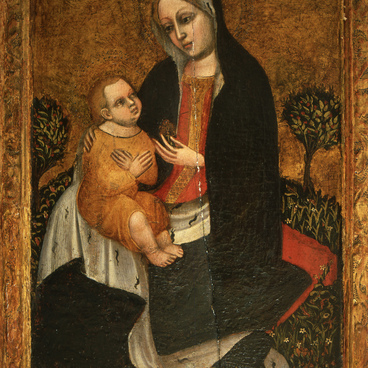In Holland, the profession of a painter was one of the most popular, as the demand for paintings was very high. Paintings secured their place in the living of the Dutch, became part of their everyday life, and a subject of commerce. The painters mostly created their works for sale on the market. Their buyers were burghers and even wealthy peasants.
Portrait of a Woman
Creation period
the 17th–18th century
Place of сreation
Europe
Dimensions
91,5x75 cm
Technique
oil, canvas
Collection
0
Open in app#3
#5
The fair in Rotterdam was overloaded with paintings (especially landscapes and genre scenes)… All the houses are stuffed with paintings, and the Dutch sell them for a big profit.
17th-century English traveler
#6
The struggle for national independence and the victory of the burghers determined the character of the 17th-century Dutch culture. Paintings were usually made in a small format because they were supposed to decorate modest dwellings or public buildings rather than palaces or villas. In Holland, the church did not commission works of art.
The Dutch portrait had specific national features. The portraits expressed the people’s national consciousness, perhaps, more than any other genre. They were distinguished by the simplicity and accuracy of the image, and the absence of any idealization.
A special place in Dutch art was occupied by female images. The collection of Dutch paintings houses “Portrait of a Woman” attributed to an unknown 17th-century artist, though the portrait may most likely date back to the 18th century and could have been painted in Denmark or Sweden. The artist managed to capture the originality of the pose and the gesture of his model. The lady is depicted in plain clothes in a small scarcely lit room. The model in the portrait is reserved and keeps her distance from the viewer.
The portrait is made in austere dark colors, with every single detail reproduced with utmost accuracy. It shows a typical Dutch burgheress, an enterprising businesslike woman, whose face is serious and full of self-esteem. This is the mistress of a wealthy Dutch house; she has just left the routine of her household chores to sit for an artist. It is clear that she does not strive to look prettier or younger than she actually is.
The Dutch portrait had specific national features. The portraits expressed the people’s national consciousness, perhaps, more than any other genre. They were distinguished by the simplicity and accuracy of the image, and the absence of any idealization.
A special place in Dutch art was occupied by female images. The collection of Dutch paintings houses “Portrait of a Woman” attributed to an unknown 17th-century artist, though the portrait may most likely date back to the 18th century and could have been painted in Denmark or Sweden. The artist managed to capture the originality of the pose and the gesture of his model. The lady is depicted in plain clothes in a small scarcely lit room. The model in the portrait is reserved and keeps her distance from the viewer.
The portrait is made in austere dark colors, with every single detail reproduced with utmost accuracy. It shows a typical Dutch burgheress, an enterprising businesslike woman, whose face is serious and full of self-esteem. This is the mistress of a wealthy Dutch house; she has just left the routine of her household chores to sit for an artist. It is clear that she does not strive to look prettier or younger than she actually is.
#7
Ministry of Culture of the Russian Federation
read morehide
00:00
00:00
1x
Portrait of a Woman
Creation period
the 17th–18th century
Place of сreation
Europe
Dimensions
91,5x75 cm
Technique
oil, canvas
Collection
0
Open in app
Share


